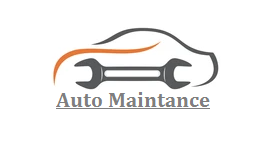A driver of a vehicle assigned to the transport of goods with a GVW greater than 3.5 tonnes must have the C license. The D license, on the other hand, authorizes the driving of a vehicle assigned to the transport of people with more than 9 seats. (driver included).
Heavy goods vehicles are therefore among the imposing and bulky vehicles for which the Highway Code provides for specific regulations and traffic rules (speed limits, periods when they are open to traffic, etc.).
As a motorist, it is important to remain vigilant around heavy goods vehicles. Indeed, the latter are imposing and need a lot of space to circulate. Their size can hinder the visibility of other drivers and hide important information such as the presence of a bend, an intersection or a traffic sign. It is important to avoid following them too closely and to consider a longer delay when exceeding them. All drivers must respect the minimum safety distance to have with the vehicle in front, whether it is a heavy goods vehicle or other road users.
Truck speed limits
Due to their size and weight, trucks cannot travel at the same speed as cars. Some heavy goods vehicles may even belong to the category of slow vehicles , and force the driver to use lanes reserved for this type of vehicle, in very steep gradients.
Take a free Highway Code test
Article R413-8 of the Highway Code imposes specific speed limits on them depending on the type of road on which they are driving. Thus, a truck driver must respect the following maximum authorized speeds:
Transportation of hazardous materials
Some heavy goods vehicles may be assigned to the delivery of goods belonging to the category of hazardous materials. When this is the case, the Highway Code requires these users to affix specific signs to their vehicle, making it possible to identify the nature of the danger.
Trucks transporting hazardous materials must affix a rectangular orange plate whose numbers specify:
Top: nature of the hazard (ADR classification). For example: Class 1 Explosive substances and objects, Flammable liquids, etc.
Below: the identification number of the hazardous material (UN code). For example: 1203 corresponds to gasoline
Orange Hazardous Material Plate
The presence of hazardous materials is also indicated by diamond-shaped danger plates. These plates have a symbol representing the nature of the danger as well as the ADR classification number.
In the event of an accident involving a vehicle delivering hazardous materials, it is essential to inform the rescue teams of the presence and nature of the materials transported by the truck. This will ensure the safety of users and that of the intervention teams in the vicinity. This report can be made by the driver himself or by another road user.

